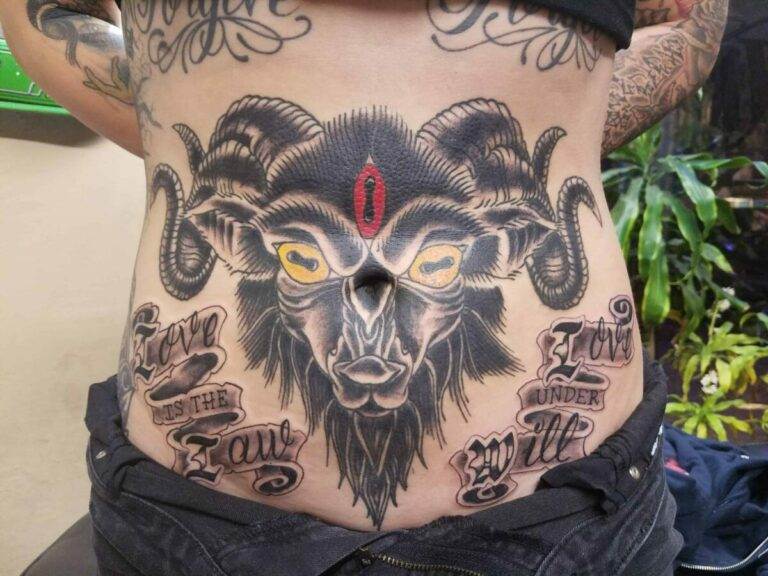
Tattoos have a rich history and cultural significance that dates back thousands of years. From ancient civilizations to modern society, tattoos have played a significant role in defining personal and cultural identity. They have been used as symbols of status, spirituality, and self-expression. Over time, tattooing techniques have evolved, and the meanings behind different tattoo designs have varied across cultures. Today, tattoos have become more mainstream and are seen as a form of art and personal expression. This article will explore the origins of tattooing, the cultural significance of tattoos, the different meanings behind tattoos across cultures, the role of tattoos in personal expression and self-discovery, the psychological impact of tattoos, the evolution of tattoo culture, the intersection of tattoos and fashion, the relationship between tattoos and gender, the impact of tattoos in the workplace, the ethics of cultural appropriation in tattooing, and the future of tattooing.
The Origins of Tattooing: A Brief History
The practice of tattooing can be traced back to ancient times. The earliest evidence of tattooing dates back to around 5,200 years ago, where Ötzi the Iceman, a mummy discovered in the Italian Alps, was found to have 61 tattoos on his body. These tattoos were believed to have been used for therapeutic purposes or as a form of acupuncture.
Tattooing has also been practiced in various ancient civilizations such as Egypt, Greece, Rome, and China. In these societies, tattoos held significant cultural and religious meanings. They were often used to symbolize social status, tribal affiliations, or spiritual beliefs.
The techniques used for tattooing have evolved over time. In ancient times, tattoos were created by using sharp objects such as bones or thorns to puncture the skin and then rubbing ink into the wounds. Today, modern tattooing techniques involve using electric tattoo machines that puncture the skin with needles and inject ink into the dermis layer.
Tattoos as a Symbol of Identity: Understanding the Cultural Significance
Tattoos have long been used as a way to define personal and cultural identity. They serve as a visual representation of one’s beliefs, values, and affiliations. In many societies, tattoos are seen as a rite of passage or a mark of belonging to a particular group or community.
The cultural significance of tattoos varies across different societies. In some cultures, tattoos are seen as a symbol of bravery or courage. In others, they may represent fertility, protection, or spiritual beliefs. For example, in Maori culture, facial tattoos called moko are used to signify a person’s social status and genealogy.
The symbolism behind different tattoo designs also varies across cultures. For instance, in Japanese culture, koi fish tattoos symbolize strength and perseverance, while cherry blossom tattoos represent beauty and the transient nature of life. In Native American culture, dreamcatcher tattoos are believed to protect against evil spirits and bring good luck.
The Different Meanings Behind Tattoos Across Cultures
Tattoos hold different meanings in different parts of the world. In some cultures, tattoos are seen as a form of protection or warding off evil spirits. In others, they may be used to commemorate important life events or to honor ancestors.
In Polynesian culture, tattoos known as tatau hold great cultural significance. They are used to tell stories and represent the wearer’s genealogy and achievements. Each design has its own meaning and is carefully chosen to reflect the individual’s identity.
In Hindu culture, tattoos are often used as a form of devotion and spiritual practice. Many Hindus get tattoos of deities or sacred symbols such as the Om symbol or the lotus flower to show their devotion to their faith.
Religious and spiritual practices also play a significant role in tattooing. In Christianity, some people get tattoos of religious symbols or verses from the Bible as a way to express their faith. In Buddhism, tattoos of sacred mantras or images of Buddha are believed to bring protection and blessings.
The Role of Tattoos in Personal Expression and Self-Discovery
Tattoos have long been used as a form of self-expression. They allow individuals to showcase their unique personality, beliefs, and interests. Tattoos can be a way to express one’s creativity and individuality.
For many people, getting a tattoo is a deeply personal experience. It can be a way to commemorate a loved one, mark a significant life event, or express personal values and beliefs. Tattoos can also serve as a form of self-discovery, allowing individuals to explore their identity and express themselves in a visual and permanent way.
The therapeutic benefits of tattooing have also been recognized. Some people use tattoos as a way to heal from past traumas or to reclaim their bodies after illness or surgery. The process of getting a tattoo can be empowering and cathartic, allowing individuals to take control of their bodies and create something beautiful out of their experiences.
The Psychological Impact of Tattoos: How They Shape Our Identity

Tattoos can have a profound psychological impact on our sense of self. They can shape our identity and how we perceive ourselves. For many people, tattoos are a source of pride and self-confidence. They can serve as a reminder of personal growth, resilience, and overcoming challenges.
Research has shown that tattoos can have a positive impact on self-esteem. A study published in the Journal of Health Psychology found that individuals with tattoos reported higher levels of self-esteem compared to those without tattoos. Tattoos can provide individuals with a sense of uniqueness and individuality, which can contribute to feelings of self-worth.
However, it is important to note that the psychological impact of tattoos can vary from person to person. Some individuals may experience negative emotions or regret after getting a tattoo. It is important to carefully consider the design and meaning behind a tattoo before getting it, as it is a permanent mark on the body.
The Evolution of Tattoo Culture: From Taboo to Mainstream
Tattoos have come a long way from being seen as taboo or associated with criminality. In the past, tattoos were often stigmatized and associated with deviant behavior. However, attitudes towards tattoos have shifted over time, and they have become more accepted and mainstream.
The role of popular culture has played a significant role in the mainstreaming of tattoos. Celebrities and athletes with visible tattoos have helped to normalize tattoos and make them more socially acceptable. Tattoos have also become more prevalent in popular media, with tattooed characters appearing in movies, TV shows, and advertisements.
Social media has also had a significant impact on tattoo culture. Platforms like Instagram have allowed tattoo artists to showcase their work and connect with a wider audience. This has helped to elevate the artistry and creativity of tattoos and has made them more accessible to the general public.
The Intersection of Tattoos and Fashion: A Look at Modern Trends
Tattoos have become an integral part of fashion and style. They are no longer limited to being hidden under clothing but are often proudly displayed as a form of personal expression.
Tattoo culture has had a significant influence on fashion trends. Many clothing brands now incorporate tattoo-inspired designs into their collections, featuring motifs such as skulls, roses, and traditional tattoo art. Tattoo-inspired clothing and accessories have become popular among both tattooed and non-tattooed individuals.
Tattoos and Gender: Exploring the Relationship Between Identity and Body Art
Tattoos can play a significant role in gender identity. In many societies, certain tattoo designs are associated with masculinity or femininity. For example, traditional tribal tattoos are often seen as more masculine, while floral or delicate designs are associated with femininity.
However, the meanings behind tattoos can vary greatly between men and women. For some men, tattoos may be seen as a symbol of strength, power, or rebellion. For women, tattoos may be a way to reclaim their bodies or express their femininity in a society that often places restrictions on female bodies.
Gender norms and societal expectations can also influence tattoo culture. In some cultures, women with visible tattoos may face more stigma or judgment compared to men. It is important to challenge these gender norms and allow individuals to express themselves freely through body art.
The Impact of Tattoos in the Workplace: Navigating Professional Settings
Having visible tattoos in the workplace can present challenges for individuals. While attitudes towards tattoos have become more accepting in recent years, there are still some industries and professions where visible tattoos may be frowned upon or even prohibited.
The changing attitudes towards tattoos in professional settings have been influenced by factors such as the rise of creative industries and the increasing acceptance of individuality in the workplace. However, it is important for individuals to be aware of workplace policies and dress codes regarding tattoos before getting visible tattoos.
Strategies for navigating workplace policies on tattoos include choosing tattoo placements that can be easily covered by clothing, opting for smaller or more discreet designs, or using makeup or clothing accessories to cover up tattoos when necessary. It is also important to consider the potential impact of visible tattoos on career advancement and professional opportunities.
The Ethics of Cultural Appropriation in Tattooing
The issue of cultural appropriation in tattooing has sparked controversy and debate. Cultural appropriation refers to the adoption or borrowing of elements from another culture without understanding or respecting their cultural significance.
Tattoo designs that are deeply rooted in specific cultural traditions should be approached with respect and understanding. It is important to educate oneself about the cultural meanings behind certain tattoo designs and to avoid appropriating symbols or designs that hold sacred or religious significance to a particular culture.
Strategies for avoiding cultural appropriation in tattooing include working with tattoo artists who have a deep understanding and respect for cultural traditions, seeking permission or guidance from members of the culture being represented, and being open to feedback and criticism from marginalized communities.

The Future of Tattooing: Trends and Innovations in the Industry
The tattoo industry is constantly evolving, with new trends and innovations emerging. Tattoo artists are pushing the boundaries of creativity and experimenting with new techniques and styles.
One of the latest trends in tattooing is the use of watercolor techniques, which create a more painterly and abstract look. Another trend is the use of minimalistic designs, with simple lines and geometric shapes. Realistic portraits and 3D tattoos are also becoming more popular.
Technology has also had a significant impact on tattooing. Advancements in tattoo machines, pigments, and aftercare products have made the process safer and more efficient. Laser tattoo removal has also become more advanced, allowing individuals to remove unwanted tattoos more effectively.
The future of tattoo culture is likely to continue to evolve as societal attitudes towards tattoos change. Tattoos may become even more accepted and mainstream, with more people embracing them as a form of self-expression and personal identity.
Tattoos have a long history and cultural significance that spans across different civilizations and societies. They have been used as symbols of identity, personal expression, and spirituality. The meanings behind tattoos vary across cultures, and they can have a profound psychological impact on our sense of self.
Tattoo culture has evolved over time, from being seen as taboo to becoming more mainstream. Tattoos have become an integral part of fashion and style, influencing trends in clothing and accessories. The relationship between tattoos and gender identity is complex, with different meanings associated with tattoos for men and women.
Tattoos in the workplace can present challenges, and individuals need to navigate professional settings while considering workplace policies and dress codes. The issue of cultural appropriation in tattooing has sparked debate, highlighting the importance of respecting cultural traditions and meanings behind tattoo designs.
The future of tattooing is likely to continue to evolve, with new trends and innovations emerging. Tattoos will continue to play a significant role in society, allowing individuals to express their unique identities and tell their stories through body art.









